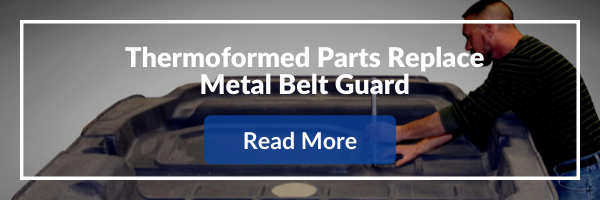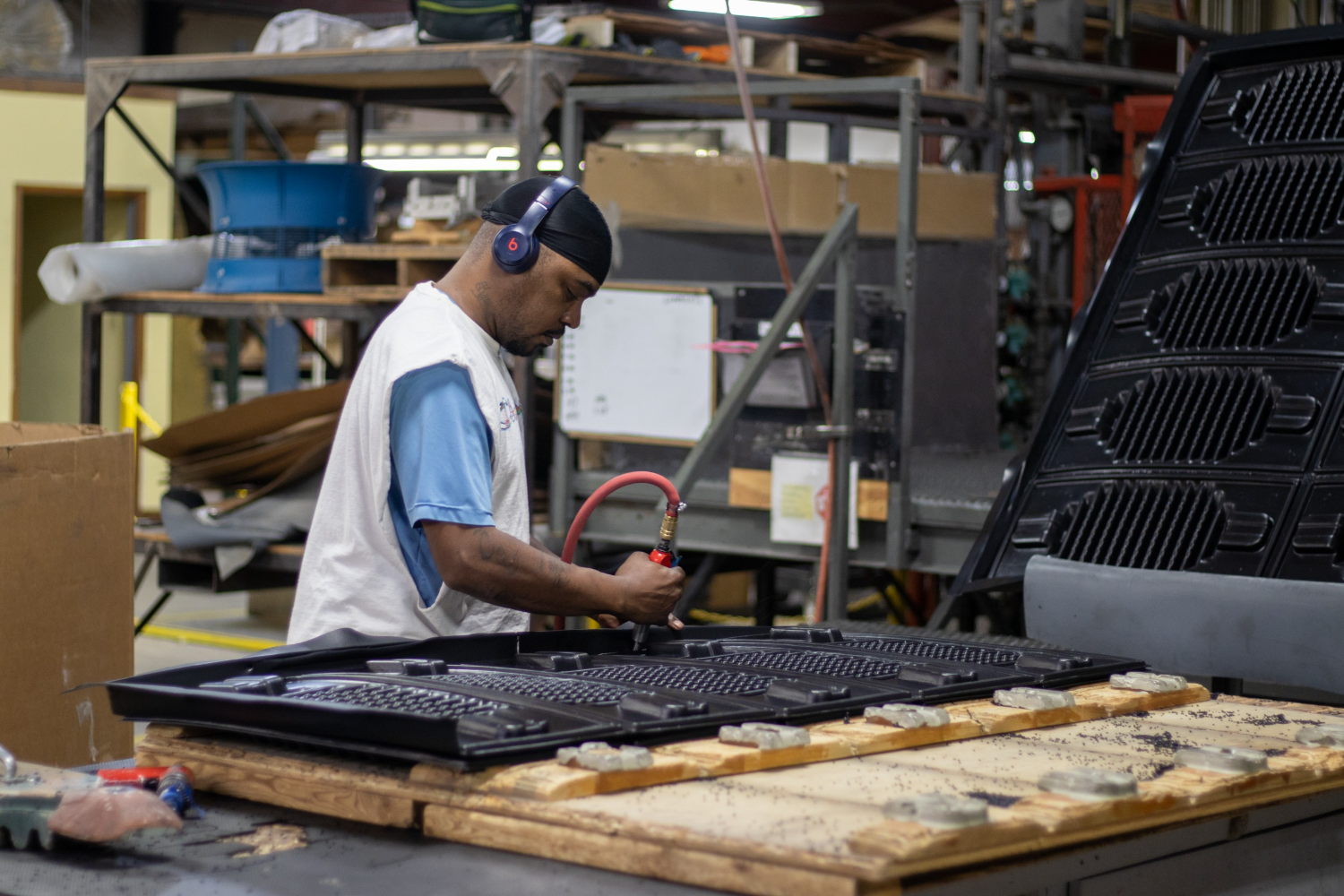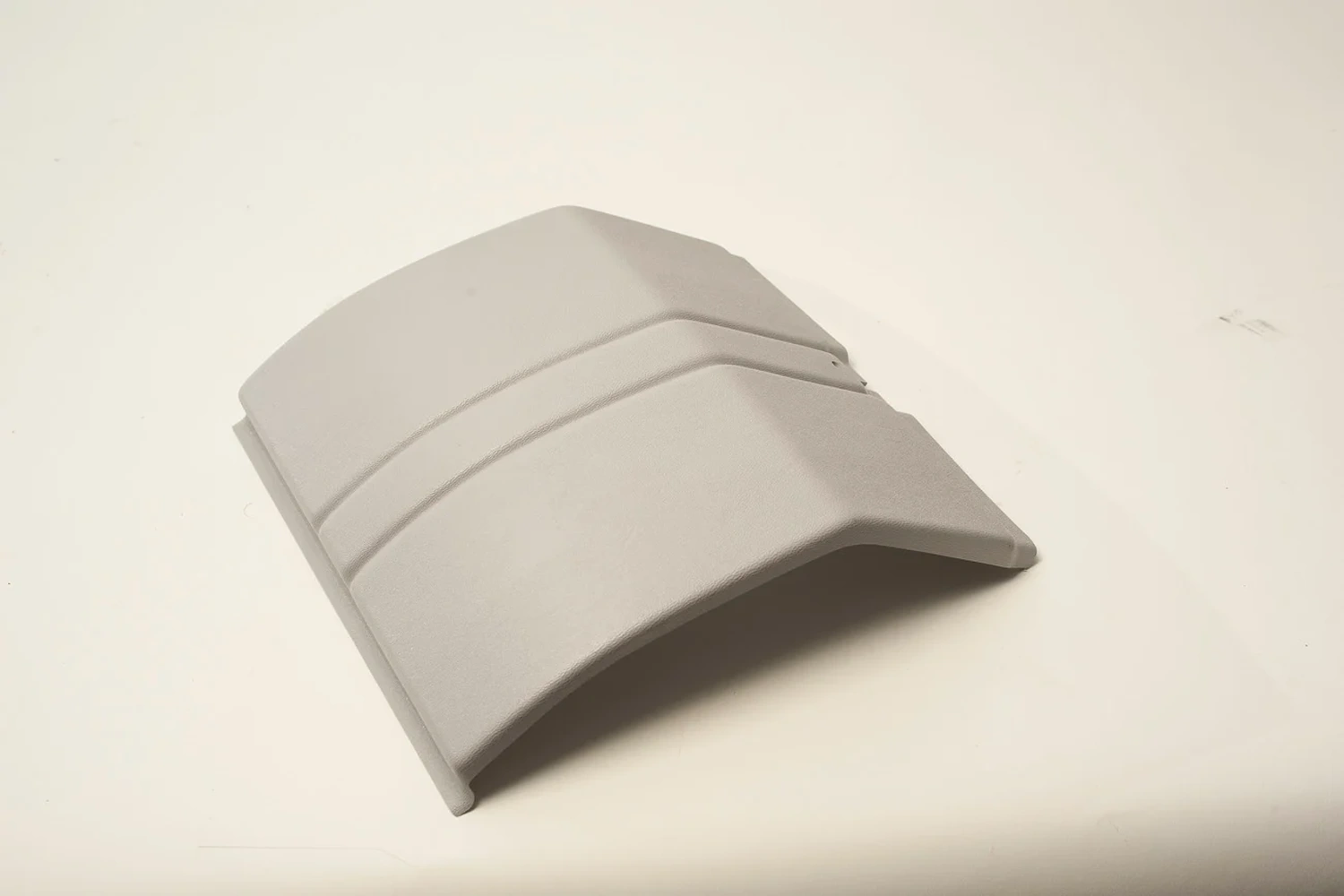Part manufacturers are constantly looking to reduce weight, simplify component designs, improve part manufacturability, and reduce part counts while improving sustainability and lowering overall costs.
Thermoplastics have increasingly become the material of choice because they are uniquely positioned to deliver on these goals and more.
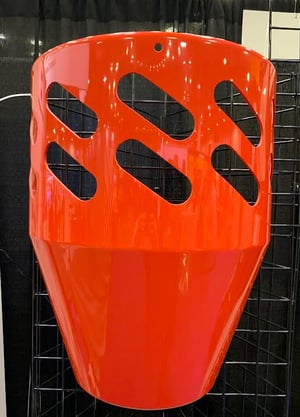 Thermoplastics Replace Sheet Molding
Thermoplastics Replace Sheet Molding
SMC, or Sheet Molding Compounds, are sheets made of fiber-reinforced thermosetting materials that have a similar structure to semi-cured fiberglass mats. The compression molding process is used to create parts from SMC, where the heated press molds the sheets into the desired shape.
The size of the sheet is typically smaller than the final part because the molding process involves both pressing and forming. Under pressure, the SMC flows into the mold cavity, and the heat activates the thermosetting resin, resulting in the part curing in the mold.
While SMC parts have their advantages, thermoplastics offer an alternative option for manufacturers. Thermoplastics have a range of mechanical properties and excellent wear resistance. They do not fray, dent, or ding, and they retain the base materials' properties and durability, which can reduce replacement and out-of-service costs.
Additionally, they are resistant to chemicals and stains and can withstand harsh disinfectants and chemical reagents without discoloration or cracking.
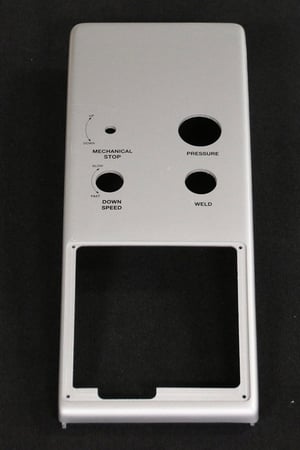 Thermoplastics Replace Laminated Materials
Thermoplastics Replace Laminated Materials
High-Pressure Laminates (HPL) are a popular choice in interior design as a decorative and protective surface finish. HPL is available in various colors and surface designs, and over time, different grades have been developed to enhance chemical and wear resistance. HPL is widely used for countertops, cabinets, retail displays, and furniture due to its durability and innovative features.
To manufacture HPL, layers of kraft paper are saturated with resin, and a decorative printed layer is added on top of the kraft paper. The layers are fused together under heat and pressure, and the curing process converts the resin into plastic, resulting in a single laminated sheet.
Although HPL has been the traditional choice for interior design, thermoplastics now offer an alternative that provides high chemical and wear resistance, as well as aesthetic options such as custom color matching, wood grains, and surface finish effects.
Manufacturers have developed thermoplastics to meet the evolving needs of designers. Additionally, increased fire, smoke, and toxicity regulatory requirements have led to the development of thermoplastic options.
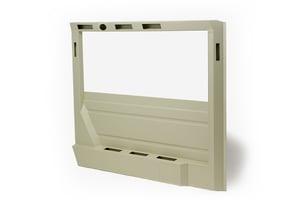 Thermoplastics Replace Sheet Metal
Thermoplastics Replace Sheet Metal
For many years, formed sheet metal has been a go-to material for a wide range of products and applications due to its ease of bending, forming, punching, and welding. However, sheet metal fabrication has inherent limitations when it comes to complex geometries.
To create complex geometries, individual parts often require multiple forming steps and the assembly of smaller parts using fasteners or welding. Additional machining steps may also be necessary to achieve the desired finished part, and painting is usually required to prevent corrosion and provide the desired aesthetic.
Thermoplastics offer an alternative to sheet metal fabrication, providing manufacturers with robust and wear-resistant materials that do not dent or ding. Unlike metal components that tend to corrode over time, thermoplastics retain their mechanical properties and durability, decreasing replacement and out-of-service costs.
Additionally, thermoplastics are lighter than similarly sized formed metal parts, reducing the weight of finished assemblies. These weight savings can reduce fuel and energy consumption in transportation applications and increase the lifespan of transportation components.
For more information about thermoforming with PCI, contact us today.
